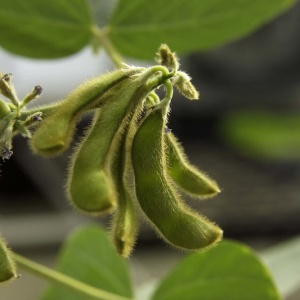
In this paper, FCRN member Erasmus zu Ermgassen finds that voluntary zero deforestation commitments (ZDCs) cover more than 90% of the soy exported from the Brazilian Amazon, but only 47% of soy exported from the Brazilian Cerrado biome (a type of wooded savannah).
The figure below shows that soy-related deforestation in the Amazon decreased after the 2006 introduction of the Soy Moratorium (for more on the Soy Moratorium, see the Foodsource building block Soy: food, feed, and land use change), although it has been rising since then. Overall soy exports from the Cerrado are much higher than from the Amazon, and have only recently begun to be covered by ZDCs. Most soy exported from the Cerrado is still not covered by a ZDC.
 Image: Figure 2, zu Ermgassen et al. The coverage of ZDCs is higher in the Amazon, where the Soy Moratorium applies, than in the Cerrado, where it does not.
Image: Figure 2, zu Ermgassen et al. The coverage of ZDCs is higher in the Amazon, where the Soy Moratorium applies, than in the Cerrado, where it does not.
Abstract
Zero deforestation commitments (ZDCs) are voluntary initiatives where companies or countries pledge to eliminate deforestation from their supply chains. These commitments offer much promise for sustainable commodity production, but are undermined by a lack of transparency about their coverage and impacts. Here, using state-of-the-art supply chain data, we introduce an approach to evaluate the impact of ZDCs, linking traders and international markets to commodity-associated deforestation in the sub-national jurisdictions from which they source. We focus on the Brazilian soy sector, where we find that ZDC coverage is increasing, but under-represents the Cerrado biome where most soy-associated deforestation currently takes place. Though soy-associated deforestation declined in the Amazon after the introduction of the Soy Moratorium, we observe no change in the exposure of companies or countries adopting ZDCs to soy-associated deforestation in the Cerrado. We further assess the formulation and implementation of these ZDCs and identify several systematic weaknesses that must be addressed to increase the likelihood that they achieve meaningful reductions in deforestation in future. As the 2020 deadline for several of these commitments approaches, our approach can provide independent monitoring of progress toward the goal of ending commodity-associated deforestation.
Reference
zu Ermgassen, E.K.H.J., Ayre, B., Godar, J., Lima, M.G.B., Bauch, S., Garrett, R., Green, J., Lathuillière, M.J., Löfgren, P., MacFarquhar, C. and Meyfroidt, P., 2019. Using supply chain data to monitor zero deforestation commitments: an assessment of progress in the Brazilian soy sector. Environmental Research Letters, 15 035003.
Read the full paper here. See also the Foodsource building block Soy: food, feed, and land use change.







Post a new comment »